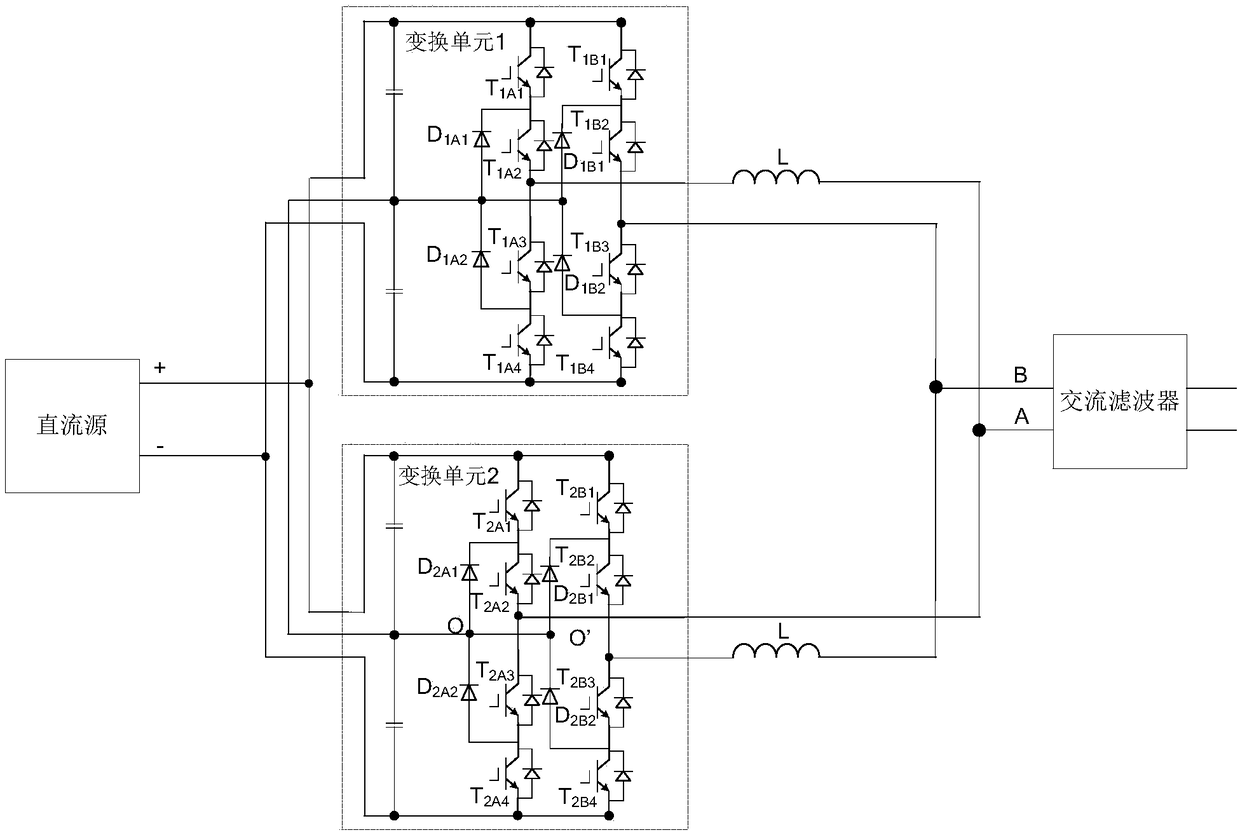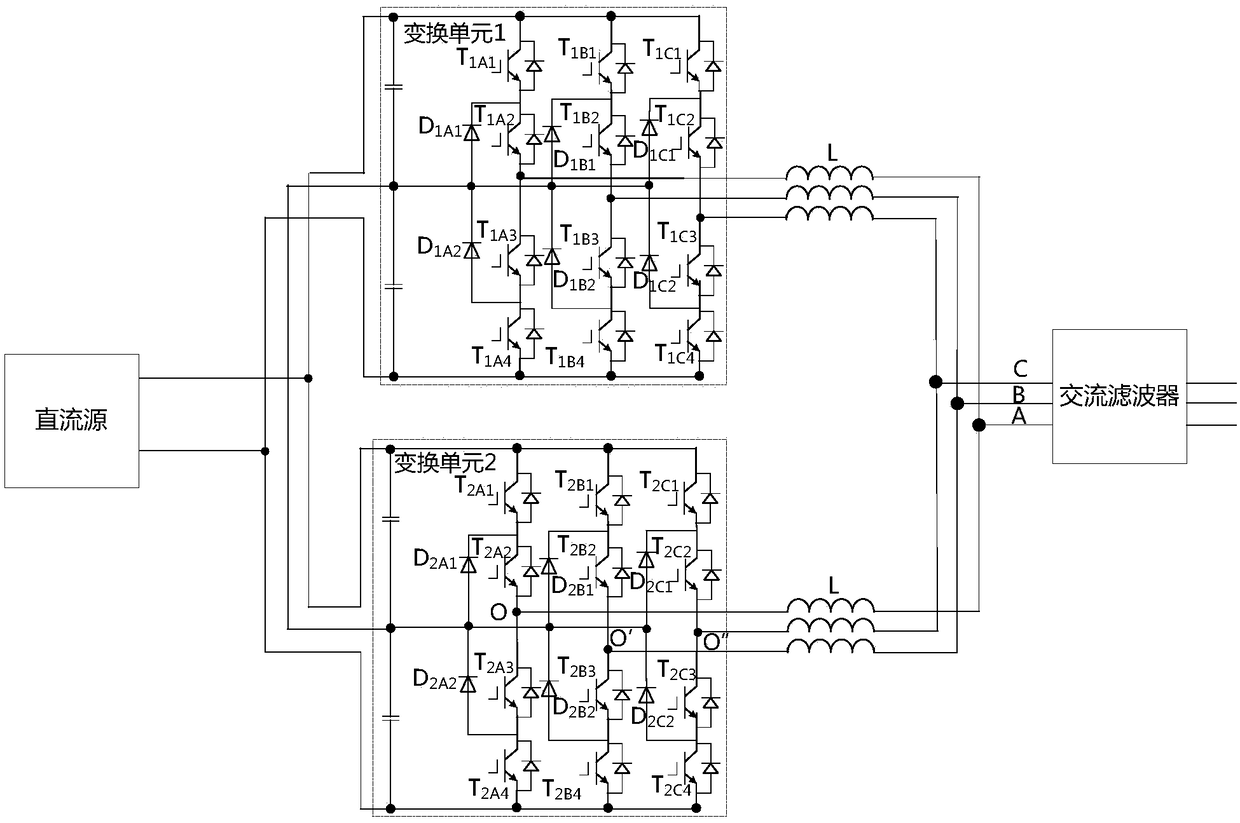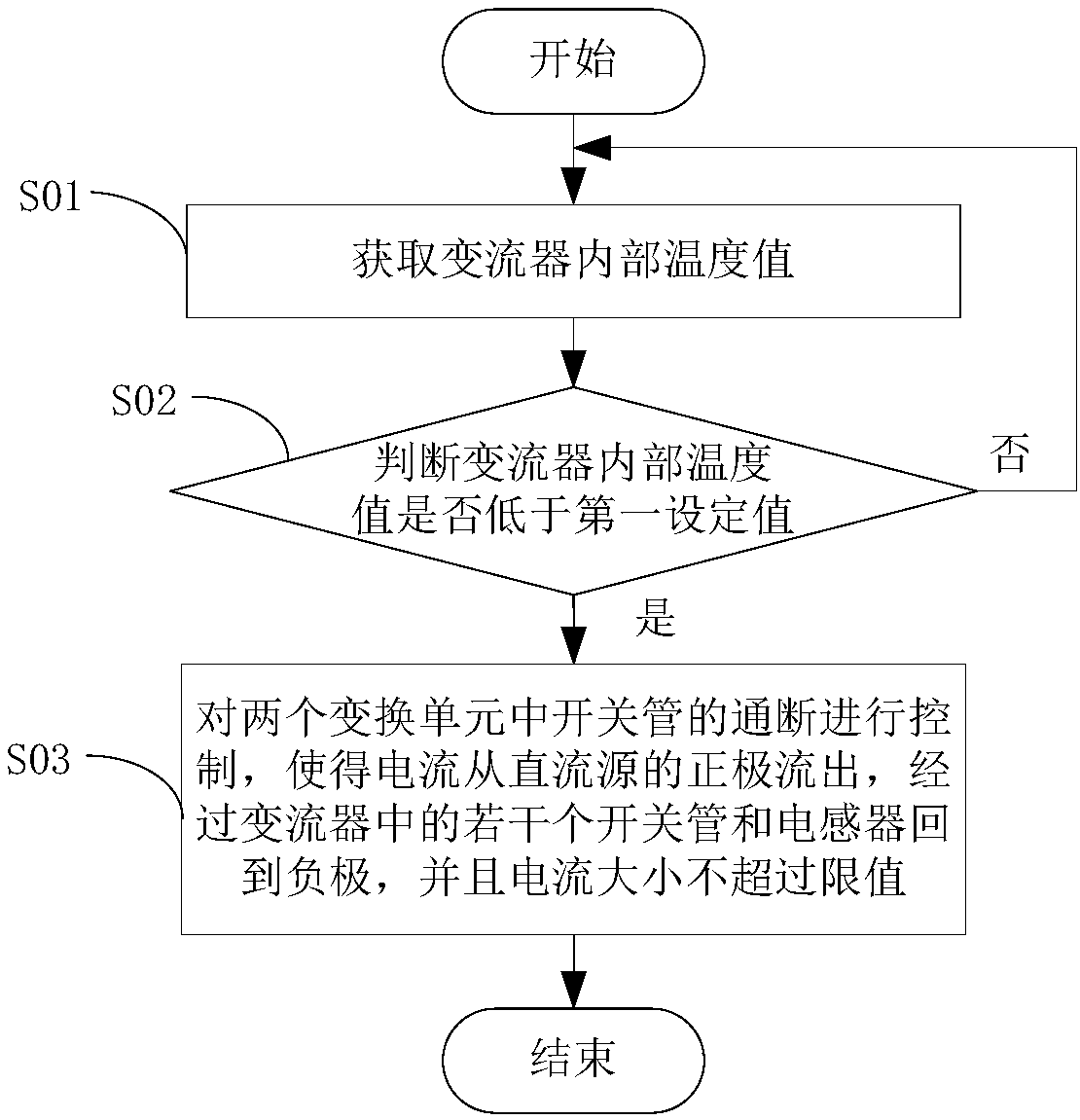Converter control method and controlling device
A control method and technology of a control device are applied in the conversion device of output power, the conversion of AC power input to DC power output, electrical components, etc., which can solve the problems of failure and damage of power semiconductor devices, and avoid excessive voltage stress and increase. The effect of internal temperature
- Summary
- Abstract
- Description
- Claims
- Application Information
AI Technical Summary
Problems solved by technology
Method used
Image
Examples
Embodiment Construction
[0033] The following will clearly and completely describe the technical solutions in the embodiments of the present invention with reference to the accompanying drawings in the embodiments of the present invention. Obviously, the described embodiments are only some, not all, embodiments of the present invention. Based on the embodiments of the present invention, all other embodiments obtained by persons of ordinary skill in the art without making creative efforts belong to the protection scope of the present invention.
[0034] Both the converter control method and the converter control device disclosed in the embodiments of the present invention are proposed for the converter with the following topology, and the purpose is to prevent the power semiconductor device of the converter from Failure and damage due to excessive voltage stress during start-up, the topology of the converter is specifically described as follows:
[0035] The converter includes two conversion units with...
PUM
 Login to View More
Login to View More Abstract
Description
Claims
Application Information
 Login to View More
Login to View More - R&D
- Intellectual Property
- Life Sciences
- Materials
- Tech Scout
- Unparalleled Data Quality
- Higher Quality Content
- 60% Fewer Hallucinations
Browse by: Latest US Patents, China's latest patents, Technical Efficacy Thesaurus, Application Domain, Technology Topic, Popular Technical Reports.
© 2025 PatSnap. All rights reserved.Legal|Privacy policy|Modern Slavery Act Transparency Statement|Sitemap|About US| Contact US: help@patsnap.com



